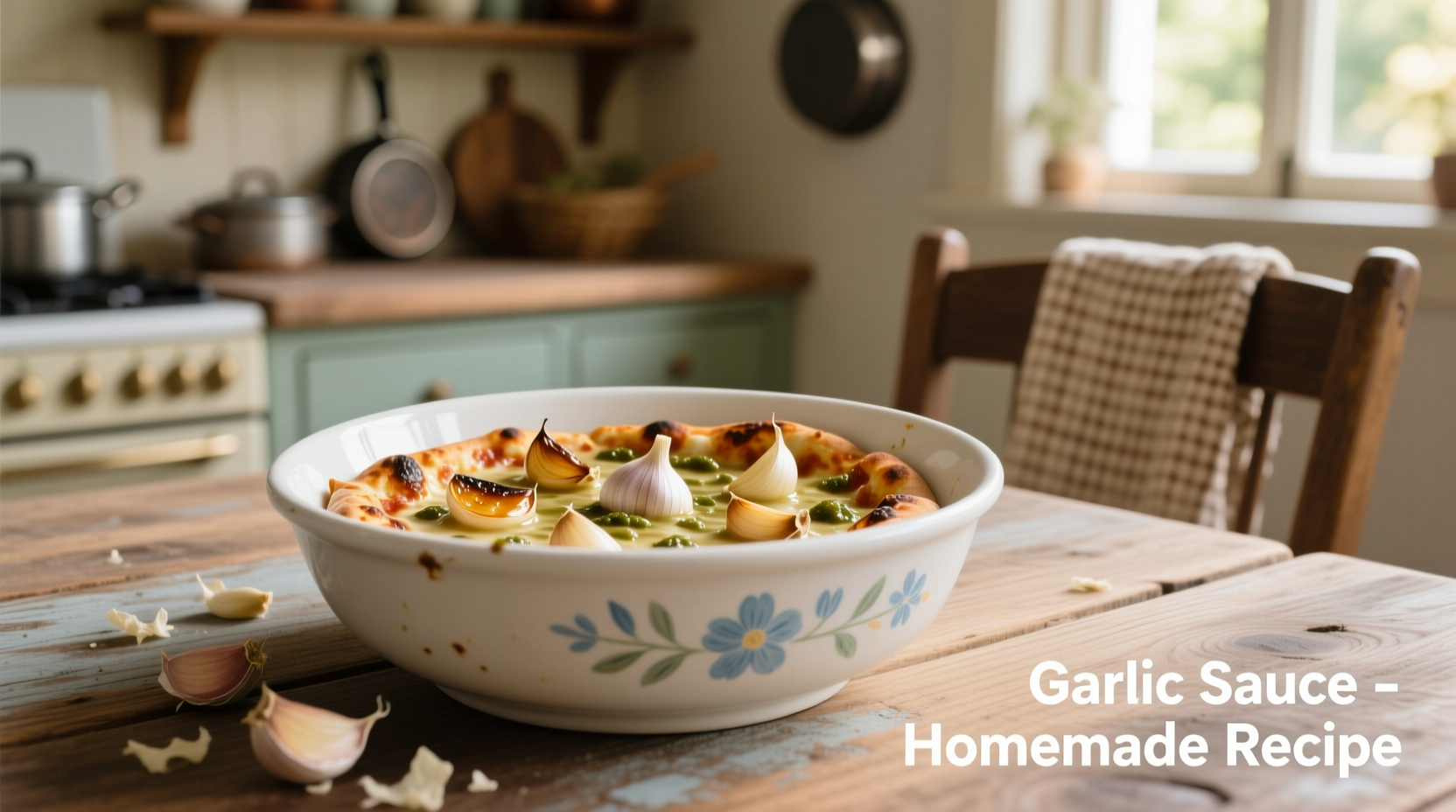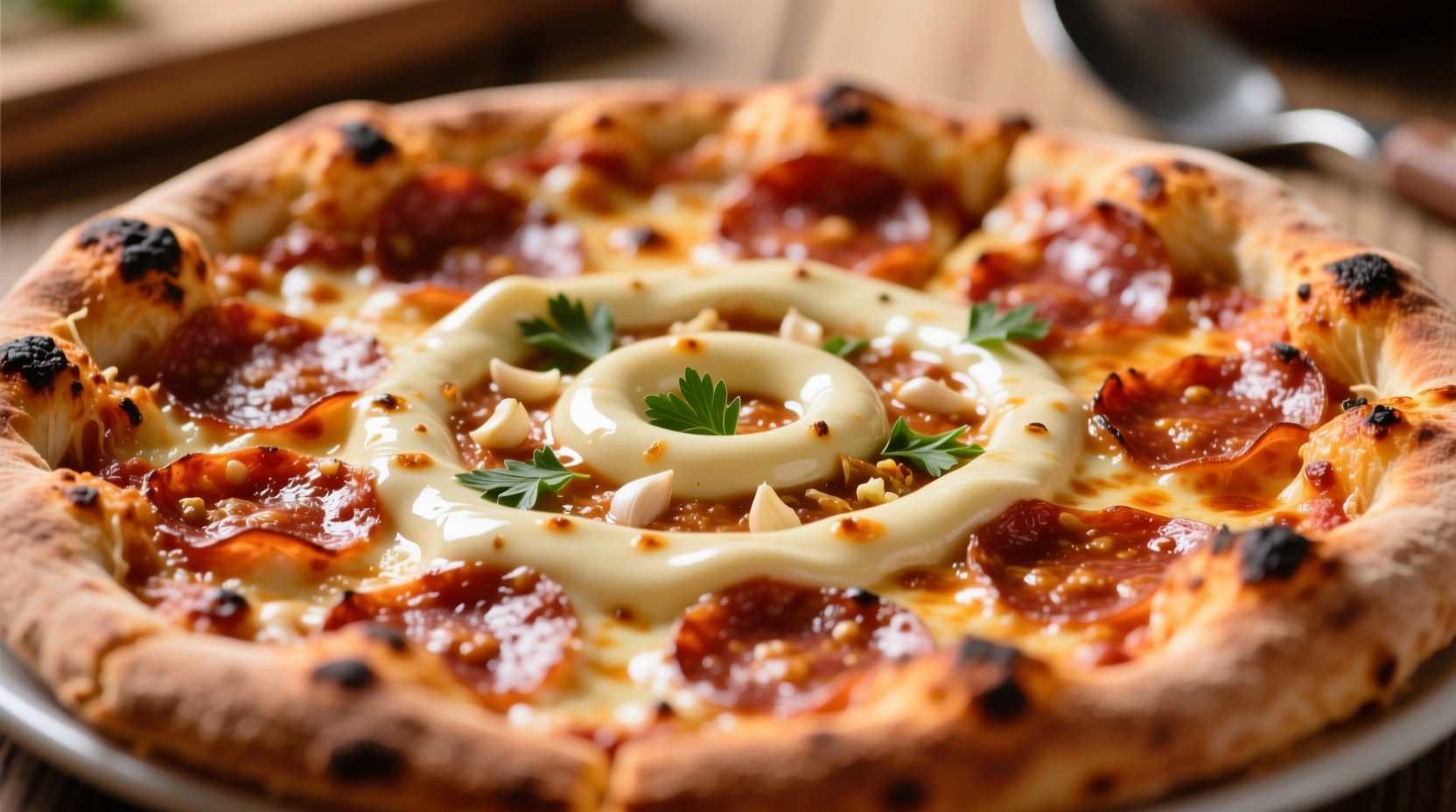What Exactly Is Pizza Garlic Sauce?
Pizza garlic sauce is a flavorful condiment made primarily from garlic, olive oil, and seasonings designed specifically to complement pizza. Unlike traditional tomato-based pizza sauces, this preparation highlights garlic's aromatic qualities while providing a rich, savory base that enhances cheese and toppings without overwhelming them. The best versions balance roasted garlic's natural sweetness with high-quality olive oil's richness, creating a sauce that elevates rather than dominates your pizza.
Why Your Pizza Needs This Essential Sauce
Professional pizzaiolos have used garlic-infused sauces for generations to add depth and complexity to their creations. When applied correctly, garlic sauce:
- Creates a protective barrier preventing sogginess from tomato sauce
- Enhances cheese browning and flavor development during baking
- Adds aromatic complexity that complements both meat and vegetable toppings
- Provides a professional finishing touch that elevates homemade pizza
Garlic Varieties Compared: Choosing Your Foundation
| Garlic Type | Flavor Profile | Best For Pizza Sauce? | Preparation Tip |
|---|---|---|---|
| Solo Garlic | Milder, sweeter | Ideal for subtle flavor | No peeling needed—roast whole bulb |
| Regular White | Classic pungent garlic | Traditional robust flavor | Minced finely for even distribution |
| Purple Stripe | Complex, slightly spicy | Artisanal gourmet pizzas | Roast cloves for mellow heat |
| Black Garlic | Umami-rich, sweet | Specialty gourmet pizzas | Mash into finished sauce |
The Evolution of Garlic in Italian Pizza Making
Garlic's journey in Italian pizza cuisine follows a fascinating timeline that explains its current prominence:
- 1830s: Street vendors in Naples began offering "aglio e olio" (garlic and oil) as a simple topping for affordable flatbreads
- Early 1900s: Immigrant pizzerias in New York started brushing garlic oil on finished pizzas as a finishing touch
- 1950s: Post-war Italy saw garlic sauce become standard in Roman pizza al taglio (by the slice) establishments
- 1980s: American chain pizzerias popularized garlic dipping sauce for crusts, creating new applications
- Today: Artisan pizzerias worldwide use customized garlic sauces as signature elements in their recipes
Perfect Pizza Garlic Sauce Recipe
This professional-tested recipe yields enough sauce for two 12-inch pizzas and maintains authentic flavor balance:
Ingredients You'll Need
- 8-10 large garlic cloves, peeled and minced
- ½ cup high-quality extra virgin olive oil
- 2 tablespoons unsalted butter
- 1 teaspoon dried oregano
- ½ teaspoon red pepper flakes (optional)
- Salt to taste
- 1 tablespoon fresh parsley, finely chopped
Step-by-Step Preparation
- Combine minced garlic, olive oil, and butter in a small saucepan
- Cook over low heat for 12-15 minutes until garlic becomes golden (not brown)
- Remove from heat and stir in oregano, red pepper flakes, and salt
- Cool for 10 minutes, then stir in fresh parsley
- Store in airtight container in refrigerator for up to 5 days

When Garlic Sauce Works Best (And When to Skip It)
Understanding context boundaries ensures perfect application every time:
- Ideal for: White pizzas, vegetable pizzas, chicken pizzas, and any pizza where tomato sauce would overpower delicate flavors
- Use sparingly with: Meat-heavy pizzas (prosciutto, pepperoni) where strong flavors already dominate
- Avoid completely with: Seafood pizzas (clashes with delicate seafood flavors) and dessert pizzas
- Application timing: Brush on crust edges before baking; use as dipping sauce after baking
Three Proven Variations to Try
Classic Roman Style
Double the garlic quantity and add a splash of white wine during cooking for authentic Roman pizza al taglio flavor. This version works particularly well with potato and rosemary toppings.
Creamy Garlic Parmesan
After preparing the base sauce, stir in ¼ cup grated Parmigiano-Reggiano and 2 tablespoons heavy cream. Ideal for white pizzas with spinach and mushrooms. The dairy components create a luxurious texture that complements earthy toppings.
Spicy Calabrian Version
Add 1-2 tablespoons of Calabrian chili paste and a squeeze of fresh lemon juice to the finished sauce. This southern Italian variation provides balanced heat that enhances meat toppings without overwhelming other flavors.
Avoid These Common Garlic Sauce Mistakes
Even experienced home cooks make these critical errors:
- Burning the garlic: Garlic scorches quickly—always cook over low heat until golden, never brown
- Using pre-minced garlic: Freshly minced garlic provides superior flavor and texture
- Applying too generously: Less is more—use 2-3 tablespoons per 12-inch pizza
- Adding too early: For dipping sauce, add fresh herbs after cooking to preserve brightness
- Improper storage: Always store in airtight container with oil covering garlic completely
Storage Guidelines for Maximum Freshness
Proper storage extends your sauce's shelf life while maintaining flavor integrity:
- Refrigerate in airtight container for up to 5 days
- Freeze in ice cube trays then transfer to freezer bags for up to 3 months
- Always keep garlic fully submerged in oil to prevent spoilage
- Discard if you notice any mold, off smells, or discoloration











 浙公网安备
33010002000092号
浙公网安备
33010002000092号 浙B2-20120091-4
浙B2-20120091-4